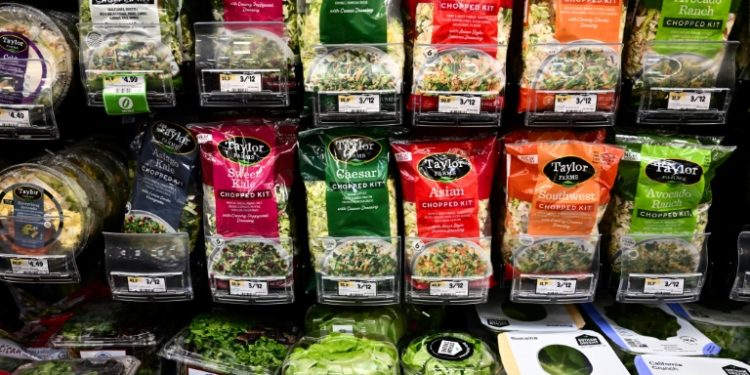Washington (AFP) – The US central bank’s favored measure of inflation edged lower on an annual basis in January, government data showed Thursday, but a metric stripping out volatile food and energy prices jumped month-over-month.
The new data highlights the challenges facing the Federal Reserve, which has recently poured cold water on the prospects of early rate cuts amid a strong economy, low unemployment and inflation that remains above its long-term target of two percent.
The personal consumption expenditures (PCE) price index rose at an annual rate of 2.4 percent in January, down 0.2 percentage points from December, the Department of Commerce said in a statement.
“The signal from the data remains that the economy continues to expand, and inflation is receding gradually,” High Frequency Economics (HFE) chief US economist Rubeela Farooqi wrote in a note to clients.
Fed officials have been debating the right time to start lowering rates, which currently stand at a 23-year high of between 5.25 and 5.50 percent.
A number of officials have come out in recent weeks to suggest the Fed can afford to be patient before it begins cutting rates.
Speaking in the US state of Georgia on Thursday, Atlanta Fed president Raphael Bostic said it would “probably be appropriate” for the US central bank to start lowering its key lending rate “in the summer time.”
– Core inflation rises –
On a monthly level, headline PCE inflation rose by 0.3 percent in January, slightly below market expectations, according to Briefing.com.
The closely watched “core inflation” measure, which strips out volatile food and energy costs, also eased, rising by 2.8 percent on an annual basis.
However, core PCE increased by 0.4 percent from a month earlier, indicating an uptick in underlying inflation from December to January.
The rise is likely to keep up the pressure on the Fed to ensure that any fall in inflation is more widespread before it starts reducing interest rates.
“Fed officials will remain patient and wait for more data that confirms that inflation is moving sustainably towards target,” Farooqi from HFE said.
There was also a sharp increase in personal income, which jumped by 1.0 percent in January after increasing by just 0.3 percent in December.
The move “primarily reflected increases in government social benefits, personal income receipts on assets, and compensation,” the Commerce Department said.
The personal savings rate, which measures how much people save as a percentage of their disposable income, ticked higher to 3.8 percent in January from 3.7 percent a month earlier.
The slight increase stands in stark contrast to a sharp drop between November and December, and suggests that consumers are beginning to rebuild their financial buffers.
© 2024 AFP





